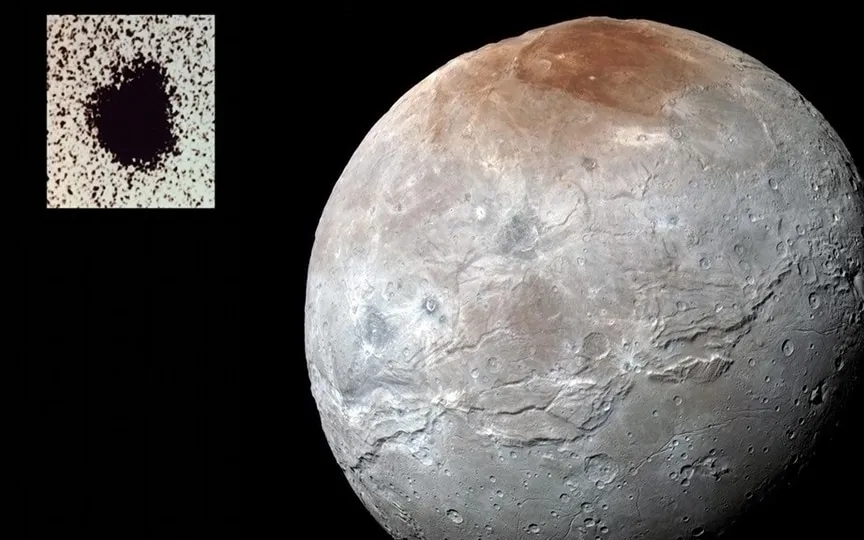Portrait of Charon, Pluto’s Moon, Captured by NASA
Pluto’s highly elliptical orbit and remote location have kept its traits and attributes veiled from human knowledge until the New Horizons spacecraft’s flyby in July 2015. This mission was instrumental in gathering vital information about this faraway planet. One of the significant revelations from the mission was the crucial role played by Charon, one of Pluto’s five moons. Charon is not only the biggest of Pluto’s moons but also the most substantial satellite in proportion to its parent body in the entire solar system. Its diameter is approximately half that of Pluto’s.
Today’s NASA astronomy photo is of Pluto’s largest moon – Charon. In this high-resolution image, the fascinating and mysterious arctic region known by some as the Mordor Macula dominates. The New Horizons spacecraft captured this stunning image of Pluto’s moon Charon during its closest approach on July 14, 2015. Interestingly, this same spot played a crucial role in James Christie and Robert Harrington’s groundbreaking discovery of Charon at the US Naval Observatory in Flagstaff at noon. June 1978.
NASA explanation of Pluto’s largest moon
In sharing the image, NASA explained that using blue, red and infrared data, the collected data was processed to enhance colors and track changes in Charon’s surface features, providing an impressive resolution of about 2.9 kilometers (1.8 miles). The resulting image shows the hemisphere toward Charon’s Pluto, revealing a visible belt of fractures and valleys around the moon, apparently separating the flat plains of the south from the varying terrain of the north.
Did you know? At 1,214 kilometers (754 miles) in diameter, NASA revealed that Charon is one-tenth the size of planet Earth. Despite its large size, Charon is visible in the grainy, negative telescopic image as a small protrusion in the upper left corner, located at approximately 1 o’clock on Pluto’s disk.




